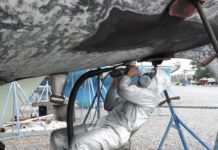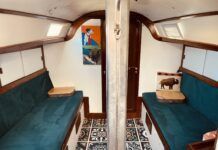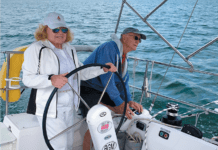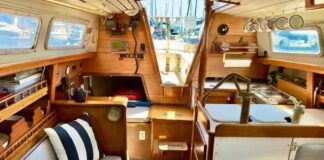Composting Marine Heads
Composting heads offer several big advantages for sailors: They require no through-hull fittings, no plumbing, and no separate holding tank.They have few moving parts. The solids are reduced fairly quickly, and take up less space than the mixed sewage, urine, and flush-water of a holding tank.On the negative side, the toilets themselves take up more space in the head compartment, they require a through – deck fitting and vent, and they need a constant supply of electricity (in very small to moderate amounts) to perform their best.
Composting heads are essentially Type III marine sanitation devices (MSDs), but with an important difference.Rather than simply storing sewage, composters separate the solid waste from the liquid portion, and convert the solid portion – the one that presents environmental problems – into an easy-to-handle, safe, non-odorous humus.The liquid waste is either stored or evaporated.
When the composting action is complete, whats left is black odor-free powder thats free of dangerous bacterial contamination. Its safe and not unpleasant to handle, and can be stored in the MSD itself, or in plastic bags or any container.The humus, however, cannot legally be dumped overboard within US territorial waters – it must be brought ashore and disposed of on land. It makes a fine fertilizer for your flowerbeds, but maybe not for your vegetable garden.
Urine, which presents much less of an environmental and health hazard than does solid waste, is a major problem with composting toilets. It can’t be composted, and the boater using a composting MSD has only two choices: store it, or evaporate it.Stored urine, while not particularly hazardous, develops a strong ammonia stink.Storage within the MSD itself is limited, so stowing it until landfall usually means transferring it to sealed plastic jugs, which add to the space requirements of a larger- than-usual head.
For advice on choosing and installing the best marine toilet for your boat, purchase and download Marine Sanitation Systems, Volume 1 – Marine Toilets today!








































